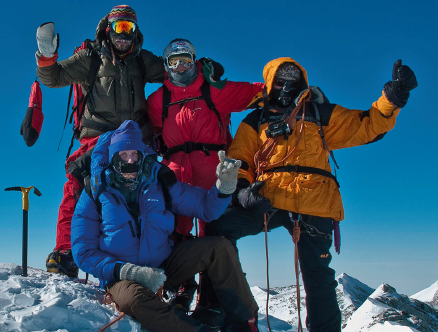NOTHING CAN STOP THEM
On May 25, 2001, Erik Weihenmayer became the first blind person to reach the summit of Mt. Everest. In 2008 he climbed Carstensz Pyramid on the island of Papua New Guinea, completing the Seven Summits, the highest point on every continent. He never stopped his adventures (1)....... . He was invited to many conferences to give speeches on his adventures and motivation.
In 2005 he got another invitation but this time it was rather different. The invitation was from a woman called Sabriye Tenberken. She was a blind woman who worked at a school called Braille Without Borders for blind in Tibet. She was inviting Erik to their school to give a speech as she and her students were inspired by his achievements. But Erik had another idea. He thought that if he climbed the Himalayan with some of the students, he could show the whole world that (2)....... too.
Climbing Himalayan was not an easy goal to achieve (3)....... . There was the rick of avalanches and other hazards. Erik and six of Tenberker’s students started working hard for their goal. It was difficult (4)....... . After their hard work and preparations came the big day. During the climb they had many difficulties. Three of the climbers has health problems and returned to the bottom of the mountain. The other three couldn’t finish the climb either but they were still very proud of their accomplishment.
Blind people face many difficulties in Tibet. Tibetans believe that those who are blind either are evil or are punished for the crimes they committed in their previous lives. These are superstitions, said Tenberken, that “can be overcome.” The climb (5)....... people and even her students think about themselves. It showed the students the boundaries of their own abilities. “I think the climb was one in many accomplishments for the students,” Tenberken said. “It’s good to find your own borders and figure out methods to get around them.”

